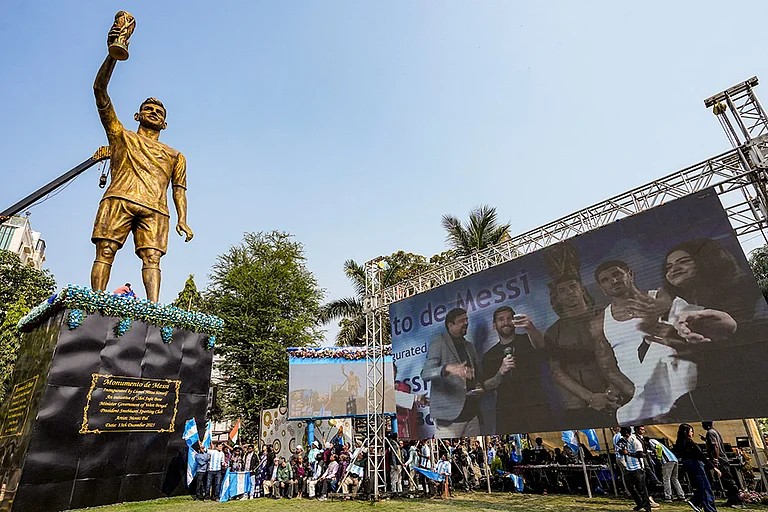Reports of the demise of the Pound legacy have been sadly premature. In her first collection of poems, Rukmini Bhaya Nair gave evidence of a truly magnificent talent, one that also refused to consider the existence of the lowest common denominator. The Hyoid Bone had much to offer to those who were willing to pick up poetry in the first place, and then to raise themselves to Nair's intellectual level. If you had the patience, the sophistication and the ability to meet Nair on her own terms,reading The Hyoid Bone was a truly rewarding experience. With The Ayodhya Cantos, Nair once again raises the bar, this time with mixed results.
Nair begins with deceptive simplicity: the first quotation in her introductory essay comes from that happy amalgam of popular cinema and in-circle wit, Shakespeare in Love. It's also the only concession to popular taste that'll pop up for the next 138 pages. Through the three-part journey that makes up The Ayodhya Cantos, Nair diffuses most of her insights through the intellect, rather than the emotions. The Gargi Silences, the second section, allows the reader to relax just a trifle, but not nearly enough.
Journey from Baroda is not the most felicitous introduction Nair might have chosen. This long poem tries to "describe some of the syncretic traditions that have gone into the making of modern India", but the images, while startling, fail to illuminate. They do, however, make you turn impatiently to Via Ayodhya, the section that introduces Hanuman as a tea stall owner, Sita as a Hindu/Muslim girl whose life is about to change in the aftermath of the demolition of the Babri Masjid, and Vishnu as the ultimate wheeler- dealer. The Cantos/Kandas— Nair deliberately draws the parallel— come very close to capturing the darkness that descended on the nation that December. It helps that her colloquial retelling of Ayodhya, '92, is bracketed by loose and literal translations from the Bhavani shlokas. If it falters somewhat, it's only because the incident that leaves an indelible mark post-'92— the young girls who sold garlands out-side the temples of Ayodhya refused to tell Nair their names, fearing what demons those sectarian symbols might ro u s e — i s contained in the introduction, not here . Postscript: Towards Bhimbetka offers a contrast to the black, post-modern mess that was Ayodhya, and it does so by rolling back time to a different age, one with its own, but more innocent, set of threats and menaces. It also provides a wry footnote on the life of the one Pandava who's always been considered too dumb for philosophy, Bhima.
The Gargi Silences is more accessible, though even here, there are poems that carry the stamp of the Eng. Lit. seminar too sharply to be of more than passing interest . But unlike the first part, where all too frequently the blood and sweat (and bibliog-raphy) of Nair's craft is on display rather than what she has to say, The Gargi Silences offers moments of sublime enjoyment.
If The Ayodhya Cantos has an overriding fla w, it's that it carries the shadows of too many post-doctoral theses. I suspect that Nair is not really capable of writing a bad or lax line, let alone an inadequately thoughtout poem. But, sadly, she has produced a second collection where few poems have a resonance without the explanatory notes.
Like the stereotypical lover, the intelligent reader is willing to work hard and suffer numerous trials so long as the object of her passion is worth the sweat. With The Ayodhya Cantos, one is sorely tempted to return to the tried and tested arms of The Hyoid Bone instead.


























